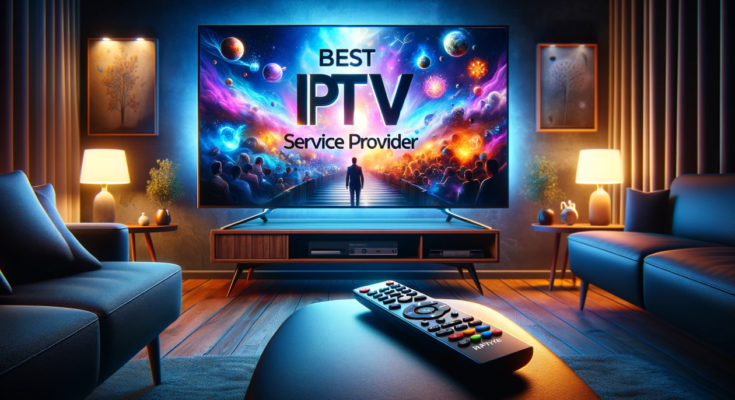Internet Protocol Television (IPTV) is transforming how we consume television, offering an alternative to traditional cable and satellite broadcasting. Using internet protocols, IPTV delivers television content to users through an internet connection, allowing for more flexibility, convenience, and personalized viewing experiences. Here’s a comprehensive look at IPTV technology, its working principles, benefits, and challenges.
What is IPTV?
IPTV stands for Internet Protocol Television, where “Internet Protocol” refers to the technology used for delivering content over the internet, and “Television” refers to the multimedia content itself. Instead of transmitting signals via cable, satellite, or terrestrial formats, IPTV uses the internet to deliver programming to viewers. The technology supports both live television and on-demand services, allowing users to watch their favorite shows, movies, or events through a variety of internet-connected devices.
How Does IPTV Work?
IPTV works by sending video content in small packets over the internet. This is different from traditional broadcasting methods, where channels are broadcast simultaneously to all viewers. With IPTV, content is streamed upon request, meaning only the channels or shows selected by the viewer are transmitted, reducing bandwidth usage.
The process involves three key components:
- Content Provider: The content provider, such as a TV network or streaming service, uploads their media content (live or on-demand) to an IPTV server.
- IPTV Service Provider: The service provider takes this content and distributes it over the internet. It can offer services like live TV, video-on-demand (VOD), and even time-shifted media (allowing users to re-watch or pause live broadcasts).
- End-User Devices: Users can access IPTV through a variety of devices, such as Smart TVs, set-top boxes, smartphones, tablets, and computers, as long as they are connected to the internet.
Types of IPTV Services
- Live TV: This works just like traditional broadcasting but over an IP network. Users can stream live events, such as sports matches, news broadcasts, or real-time shows. The IPTV service provider ensures smooth delivery by buffering the content in real-time to avoid lags.
- Video-on-Demand (VOD): With VOD, users can select and watch a video from a library of available titles at any time. Popular services like Netflix, Hulu, and Amazon Prime are forms of VOD over IP networks.
- Time-Shifted TV: This allows users to watch previously aired programs at a more convenient time. It’s similar to DVR services provided by cable companies, but IPTV allows for greater flexibility and access via the internet.
- Catch-up TV: Some IPTV services let users watch episodes or programs after they have aired. This is useful for people who miss the original broadcast.
Key Benefits of IPTV
- Personalization and Flexibility: IPTV allows users to select content when they want, as opposed to being tied to scheduled programming. The user can start, pause, rewind, or fast-forward content on-demand.
- Multiple Device Support: IPTV works on a wide range of devices, including Smart TVs, smartphones, tablets, laptops, and even gaming consoles. This cross-platform compatibility makes IPTV extremely versatile for today’s digital lifestyle.
- Interactive Features: IPTV often includes interactive features that allow users to search for content, customize their viewing preferences, or even engage with other viewers through chat features or live polling.
- Cost-Effective: IPTV is often more affordable than traditional cable or satellite services. Consumers can choose packages that fit their budget and preferences without paying for channels or services they don’t use.
- High-Quality Video Streaming: IPTV providers can deliver high-definition (HD) and even ultra-high-definition (UHD) content, provided the user has a fast and stable internet connection.
Challenges and Limitations
- Internet Dependency: IPTV heavily relies on the speed and stability of the user’s internet connection. Users with slow or inconsistent internet speeds may experience buffering, poor image quality, or connection loss.
- Bandwidth Demand: IPTV, particularly HD or 4K streams, requires significant bandwidth. This can lead to network congestion, especially in households with multiple devices connected to the internet simultaneously.
- Piracy Concerns: Unauthorized IPTV services, also known as “pirate IPTV,” have become an issue. These services offer access to copyrighted content without proper licensing, raising legal and security concerns.
- Regulation and Licensing: Unlike traditional broadcasters, IPTV operates in a somewhat gray area when it comes to content licensing and regulation. As the technology evolves, governments and regulatory bodies are beginning to pay closer attention to how IPTV services operate and how content is distributed.
- Quality Control: While IPTV can deliver high-quality video, the quality can vary greatly depending on the service provider and the network infrastructure in place. Without proper content delivery networks (CDNs), users may experience lagging or lower-quality streams.
Future of IPTV
The future of IPTV looks promising with the continued expansion of high-speed internet and the increasing demand for digital streaming. As more households upgrade to fiber-optic and 5G networks, IPTV will become an even more attractive option for consumers.
The integration of Artificial Intelligence (AI) and machine learning will further enhance IPTV services by offering personalized recommendations and improving the user experience. Cloud-based solutions are also likely to play a major role, allowing for better scalability, storage, and delivery of content.
Additionally, as more industries adopt IPTV for corporate training, virtual events, and telemedicine, the scope of the technology will likely expand beyond entertainment.
Conclusion
IPTV technology is fundamentally reshaping how we consume content. It offers a flexible, cost-effective, and user-centric model for delivering television and multimedia content over the internet. While challenges like bandwidth demands and piracy exist, the growth of IPTV shows no signs of slowing down, especially as the world becomes more digitally connected. As new advancements continue to emerge, IPTV is poised to become the primary mode of television broadcasting in the future.

